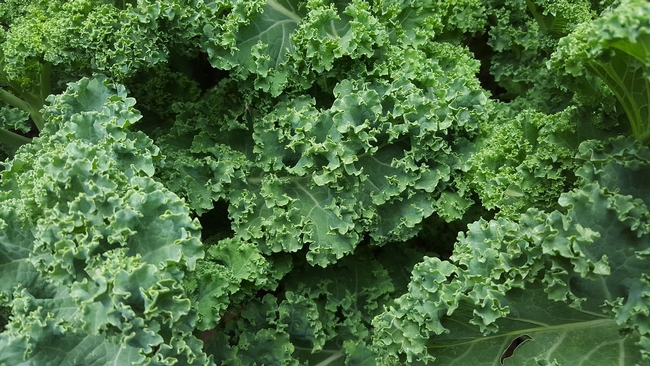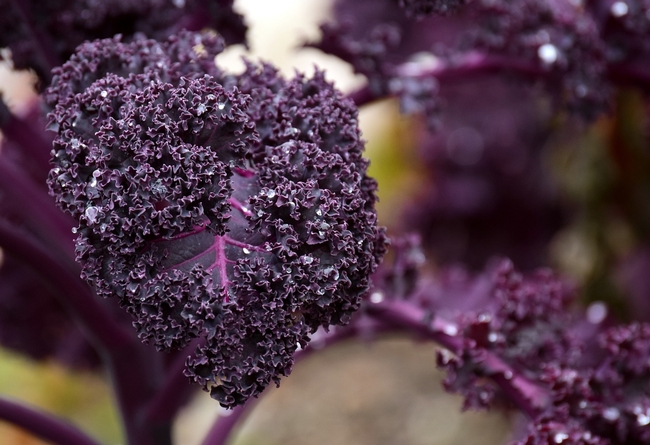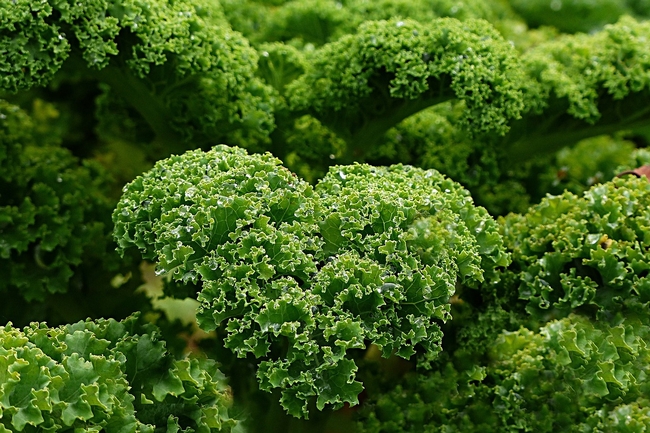Kale has the reputation of being a “superfood.” This is one of those vague terms scorned by experts, dietitians and scientists but loved by marketers.
Kale is, indeed, high in vitamins and fiber. It seems to have entered the American consciousness sometime in the 1990s, when we began to pay more attention to nutrition. Whether it's tasty is another source of controversy, almost as divisive as politics. The answer depends a lot on how it's prepared. If you're not currently a fan, I recommend you find some good recipes.
Due to kale's popularity and vaunted health benefits, the Master Gardeners Field Test Committee thought the vegetable would be a good subject for a field trial. We would grow three varieties in our gardens to see which did the best and which we liked best.
Kale is a cool-weather crop, so we planted in late summer for a fall to winter harvest. One variety we chose was Black Magic, an Italian kale composed of long, dark green, very crinkly leaves. Another was Red Russian, which has softer, lighter green, frilly leaves with a red stem.
These two varieties are common types available from many seed sellers. We purchased them from Territorial Seed Company.
For the third variety, we wanted something more exotic, so we turned to Kitazawa Seed Company, now sold under True Leaf Market. We chose Ethiopian kale, also known as mustard kale, Abyssinian mustard, African kale and Highland kale. It certainly sounded exotic. I was a bit disappointed to find that it looks a lot like the Italian variety, only softer and less crinkled.
We were curious about the best time for seeding so we tried different starting times. We all began with planting seeds in cell packs, but we spread our starting times over two months, from early August to early October.
For August and September starts, the seedlings were ready to go into the ground five to six weeks after seeding. The seeds started in October struggled through the winter and barely stayed alive until spring. They eventually took off and did well, but they would have done better If we had just waited until early spring to plant the seeds.
Planting for a fall harvest is all about timing. Unlike in spring, when several months of mild temperatures allow plenty of leeway for planting, the window of opportunity for planting fall-maturing crops is small. August is still too warm to set out cool-weather crops, so they must be started in sheltered conditions. Then the seedlings must go in the ground in time to allow for vigorous growth before the days get too short.
Our Napa Valley climate presents some challenges because the weather usually remains warm well into October. Many of us still have tomatoes, peppers and eggplants in our vegetable beds through October. So it's hard to get cool-weather seedlings planted and growing before the so-called “Persephone period” from November 20 to January 20, the shortest days of the year. During this period there is not enough sunlight for plants to thrive. The seeds we started in August produced harvest-ready leaves (8 to 10 inches) by November, but eventually many of the plants began to go to seed or were besieged by insects. The seeds started in early September produced seedlings for planting by mid-October. A month later, they were ready to harvest. In fact, by that time they had overtaken the earlier planting in size (12 to 24 inches) and vigor. They held on through the winter and continued to grow in spring.
Conclusion: Early September is the best time to start kale seeds in our climate, and mid-October is ideal for transplanting. At least that was the case in 2022.
As for flavor, there was no consensus. Some people loved Black Magic; others found it tough. I thought it was the most flavorful, but it requires some treatment to use it raw in salads, such as massaging the leaves with oil. Both Russian and Ethiopian kales are softer and can be prepared in any number of ways.
In a tally of which type we would grow again, 75 percent of trial participants said yes to Italian; only 25 percent would replant Russian, and we had an even split on Ethiopian.
Overall, kale is a hardy and easy-to-grow plant. Some participants reported problems with aphids, which are easy to miss because they hide on the underside of leaves. If you catch them early, you can wash them off with a hose and avoid damage to the leaves.
Birds love kale, but floating row covers will protect the plants from these predators. Only one person reported snail damage. Kale leaves grow upward and are not usually in contact with the ground, so the snail-eaten plants may have been young. Snail bait containing iron phosphate can provide protection against snails and slugs.
Workshop: Join UC Master Gardeners of Napa County for a workshop on “Welcoming California Native Plants into Your Garden” on Saturday, August 26, from 10 am to noon, at Las Flores Learning Garden, 4300 Linda Vista Avenue, Napa. Learn compelling reasons to include native plants in your garden, when and how to plant them, and how to care for them. Attendance is limited. Register here.
Library Talk: Join UC Master Gardeners of Napa County for a free Napa Library talk on “Save Your Leaves, Save the Planet!” on Thursday, September 7, from 7 pm to 8 pm via Zoom. Learn how to use organic materials from your kitchen and garden to enrich the soil and fight climate change. Register here to receive the Zoom link.
Guided Tree Walk: Join UC Master Gardeners of Napa County for a free guided tree walk in Napa's Fuller Park, Oak Street and Jefferson Street, on Friday, September 8, from 10 am to noon. Space is limited to 15 and each person attending must register separately. Register here.
Help Desk: The Master Gardener Help Desk is available to answer your garden questions on Mondays and Fridays from 10 am until 1 pm at the University of California Cooperative Extension Office, 1710 Soscol Avenue, Suite 4, Napa. Or send your questions to mastergardeners@countyofnapa.org. Include your name, address, phone number and a brief description of the problem. For best results, attach a photo of the plant. You may also leave a voicemail message with the same information


